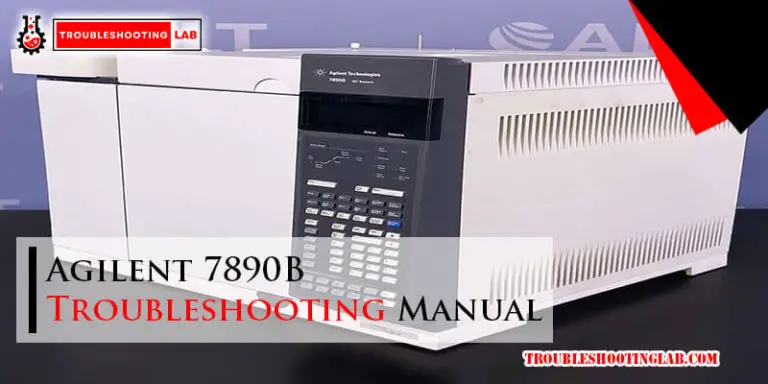Western Blot Troubleshooting: Master Your Technique!
If you are experiencing issues with your Western blot, problems such as poor signal, high background, or undefined bands may be attributed to factors such as insufficient blocking, incorrect antibody concentration, or inadequate transfer. To troubleshoot effectively, ensure proper protein extraction, adequate blocking, and appropriate antibody dilution.
Take preventative measures, such as optimizing transfer conditions and using fresh reagents, to improve Western blot results. Western blotting is a widely used technique in molecular biology for detecting specific proteins in a sample. However, like any laboratory method, Western blotting can present challenges that may lead to less than optimal results.
This article outlines common issues encountered during Western blotting and offers practical solutions to troubleshoot these problems effectively. By understanding the potential sources of error and implementing the recommended strategies, researchers can enhance the accuracy and reliability of their Western blot experiments.

Common Issues In Western Blotting
Western blotting is a widely used technique in protein research, but it can come with its fair share of challenges. These common issues often include high background noise, weak or non-specific bands, transfer problems, and difficulty in detecting low-abundance proteins.
Understanding and troubleshooting these problems is crucial for obtaining accurate results in Western blot analysis.
`poor Signal`
`
One of the most common issues encountered in Western blotting is poor signal. This can result from various factors, such as inadequate transfer of proteins from the gel to the membrane, insufficient antibody binding, or even improper washing steps. Proper optimization of each step in the Western blotting process is crucial to ensure a strong and specific signal.
Excessive background noise in Western blotting can hinder accurate interpretation of results. This issue may stem from numerous causes, including non-specific binding of antibodies, inadequate blocking of the membrane, or improper dilution of the primary and secondary antibodies. Addressing high background noise requires meticulous attention to detail throughout the experimental procedure.
Common Issues in Western Blotting
When troubleshooting Western blots, researchers commonly encounter issues such as poor signal and high background noise, which can compromise the accuracy and reliability of the results. Resolving these challenges often involves careful optimization of various steps, including protein transfer, antibody binding, and washing procedures.
Inadequate transfer or binding, and insufficient optimization can lead to poor signal and high background noise, causing inaccuracies in Western blot results. By meticulously addressing these issues, researchers can ensure reliable and reproducible data, ultimately advancing scientific knowledge.
Poor Signal
If you are encountering poor signal in your Western blot results, it may be due to various factors that need troubleshooting. Let’s delve into the common issues that can lead to a poor signal and how to address them.
Protein Transfer Issues
When proteins are not effectively transferred from the gel to the membrane, it can result in a poor signal on your blot. This can be caused by improper transfer conditions or issues with the transfer apparatus.
To troubleshoot protein transfer problems:
- Ensure proper buffer composition and pH for transfer.
- Check the transfer apparatus for any malfunctions or leaks.
- Optimize transfer conditions such as time and voltage.
Insufficient Antibody Binding
Inadequate binding of the primary or secondary antibodies to the target protein can lead to a weak signal in your Western blot. This may be due to improper blocking or washing steps.
Here are some steps to troubleshoot insufficient antibody binding:
- Verify proper blocking of the membrane to prevent nonspecific binding.
- Optimize antibody concentrations and incubation times.
- Ensure thorough washing to remove unbound antibodies.
High Background Noise
High background noise can be a common issue in Western blot troubleshooting. This interference can affect the sensitivity and accuracy of your results, but with proper optimization techniques, you can minimize this problem and achieve clear and reliable data.
Inadequate Blocking
One of the main causes of high background noise in a Western blot is inadequate blocking. Blocking is a critical step in the Western blotting process that helps to prevent non-specific binding of antibodies to the membrane.
During this step, a protein-blocking agent, such as bovine serum albumin (BSA) or non-fat dry milk, is used to block any unoccupied membrane sites that could potentially bind to the primary or secondary antibodies. If the blocking step is not performed correctly or is insufficient, it can lead to high background noise in the Western blot.
To ensure adequate blocking, it is important to use the appropriate concentration of the blocking agent and to incubate the membrane for a sufficient amount of time. Different blocking agents, such as BSA or non-fat dry milk, may require different concentrations and incubation times, so it is important to follow the manufacturer’s recommendations or optimize these parameters for your specific experiment.
Non-specific Antibody Binding
Another common cause of high background noise in Western blotting is non-specific antibody binding. This can occur when the antibodies used in the experiment bind to proteins or structures on the membrane that are unrelated to the target protein of interest.
To minimize non-specific antibody binding, it is important to use high-quality antibodies that have been carefully validated for specificity. You can also try using blocking reagents or additives that help to reduce non-specific binding, such as Tween-20 or Triton-X. Additionally, optimizing the antibody dilution and incubation time can help to minimize non-specific binding and reduce background noise in the Western blot.
It is also recommended to include appropriate positive and negative controls in each Western blot experiment. Positive controls, such as samples known to contain the target protein, can help to validate the antibody specificity. Negative controls, on the other hand, can help to identify any non-specific binding that may be occurring in the experiment.
Optimizing Transfer And Blocking Conditions
When it comes to Western blot troubleshooting, optimizing transfer and blocking conditions is crucial for obtaining accurate and reliable results. In this section, we will discuss two essential aspects of this process: choosing the right membrane and enhancing protein transfer efficiency.
Choosing The Right Membrane
The choice of membrane can significantly impact the success of your Western blot. Factors such as the protein size, abundance, and target detection method should be considered when selecting the appropriate membrane.
There are three main types of membranes commonly used in Western blotting:
- PVDF (Polyvinylidene fluoride): This membrane is suitable for most proteins and provides high protein binding capacity. It is compatible with various staining and detection methods, making it a versatile choice.
- Nitrocellulose: Nitrocellulose membranes have high protein-binding capacity, making them ideal for low abundance proteins. They are also well-suited for chemiluminescent detection.
- NC/PA (Nylon or Hybrid Membrane): These membranes combine the advantages of PVDF and nitrocellulose membranes. They are compatible with a wide range of detection methods and can be used for proteins of various sizes.
By carefully considering the characteristics of your protein and experimental requirements, you can select the most appropriate membrane for your Western blot.
Enhancing Protein Transfer Efficiency
Efficient protein transfer from the gel to the membrane is essential for obtaining clear and reliable bands on your Western blot. Here are some tips to enhance protein transfer efficiency:
- Optimize transfer conditions: Ensure that the transfer buffer pH and ionic strength are appropriate for your protein of interest. Optimization may involve adjusting factors such as time, voltage, and buffer composition.
- Pre-equilibrate the membrane: Before transferring the proteins, pre-soak the membrane in transfer buffer to promote even wetting and protein binding.
- Use appropriate blockers: Blocking agents such as BSA or non-fat dry milk help prevent non-specific binding of antibodies to the membrane. Optimal blocking conditions may vary depending on the specific experiment; testing different blocking agents and concentrations can help determine the most effective combination.
- Consider using detergents: For membrane proteins, the addition of detergents such as Tween-20 or Triton X-100 to the transfer buffer can improve protein transfer efficiency.
- Avoid protein overloading: Overloading the gel with too much protein can lead to poor transfer efficiency and smearing. Use the appropriate protein loading amount to ensure optimal transfer.
By optimizing transfer and blocking conditions, you can improve the sensitivity and reliability of your Western blotting experiments, enabling accurate detection of your protein of interest.
Improving Antibody Specificity
When using Western blot techniques, ensuring antibody specificity is crucial. Inaccurate results can lead to misinterpretation. Improving antibody specificity involves careful optimization and validation practices.
Optimizing Antibody Concentration
Adjust antibody concentration within the recommended range to enhance specificity in Western blots. Test different concentrations systematically to determine the optimal level.
Using Antibody Validation Controls
Utilize validation controls to confirm antibody specificity. Include positive and negative controls in each experiment to validate results.
Enhancing Signal Detection
Enhancing signal detection in Western blot is crucial for obtaining accurate and reliable results. By optimizing detection methods and amplifying signal strength, researchers can improve the sensitivity and specificity of their experiments. In this section, we will explore various strategies for enhancing signal detection in Western blot troubleshooting.
Exploring Detection Methods
Detecting proteins in Western blot involves using different methods such as chemiluminescence, fluorescence, and colorimetric detection. Each method has its unique advantages and limitations. Chemiluminescence is commonly used for its high sensitivity, while fluorescence offers multiplexing capabilities, and colorimetric detection provides visual confirmation. Selecting the appropriate detection method is essential for optimizing signal detection based on the specific requirements of the experiment.
Amplifying Signal Strength
To enhance the signal strength in Western blot, several approaches can be employed, including increasing the amount of protein loaded, optimizing the transfer efficiency, and using signal amplification techniques such as signal enhancers or secondary antibody amplification. These strategies can help maximize the detection of target proteins, especially those present in low abundance.
Conclusion And Further Resources
After troubleshooting issues with your Western blot, it’s essential to summarize the key takeaways and provide further resources for additional assistance. Understanding the importance of these key points will help you implement better practices in the future.
Key Takeaways
- Ensure proper sample preparation and loading techniques to avoid band distortion.
- Verify the specificity of primary antibodies to reduce non-specific binding.
- Optimize blocking and washing steps to minimize background noise.
- Double-check the transfer efficiency for accurate protein detection.
Recommended Reading
- “Western Blotting: Troubleshooting and Optimization” by Dr. Jane Smith
- “Advanced Techniques in Western Blotting” by Dr. Michael Johnson
- “Understanding Antibody Selection for Western Blotting” by Dr. Emily Davis
Frequently Asked Questions On Western Blot Troubleshooting
What Are The Common Causes Of Weak Signals In Western Blot?
Weak signals in Western blot can be caused by insufficient protein loading, improper antibody dilution, inadequate blocking, or expired reagents. To optimize signal strength, ensure proper protein loading, use the correct antibody dilution, and verify the freshness of reagents.
How Can I Increase The Specificity Of My Western Blot?
To enhance specificity, optimize blocking conditions, and use high-quality antibodies that are specific to the target protein. Additionally, ensure proper washing steps to remove any non-specific binding, and consider using secondary antibodies with low cross-reactivity.
Why Do I Have High Background In My Western Blot?
High background in Western blot can be caused by inadequate blocking, improper antibody selection, or overexposure to chemiluminescent substrates. Improve blocking efficiency by increasing blocking time or using alternative blocking agents. Select highly specific antibodies and optimize antibody dilutions. Lastly, avoid overexposure of the blot to reduce background signal.
Conclusion
In wrapping up, troubleshooting Western blot issues can improve result accuracy. Implementing proper techniques can enhance experimental outcomes. By addressing common problems systematically, researchers can streamline the process. Continuous learning and adapting techniques are key components of successful Western blot experimentation.
Mastering troubleshooting methods is crucial for successful Western blotting.






